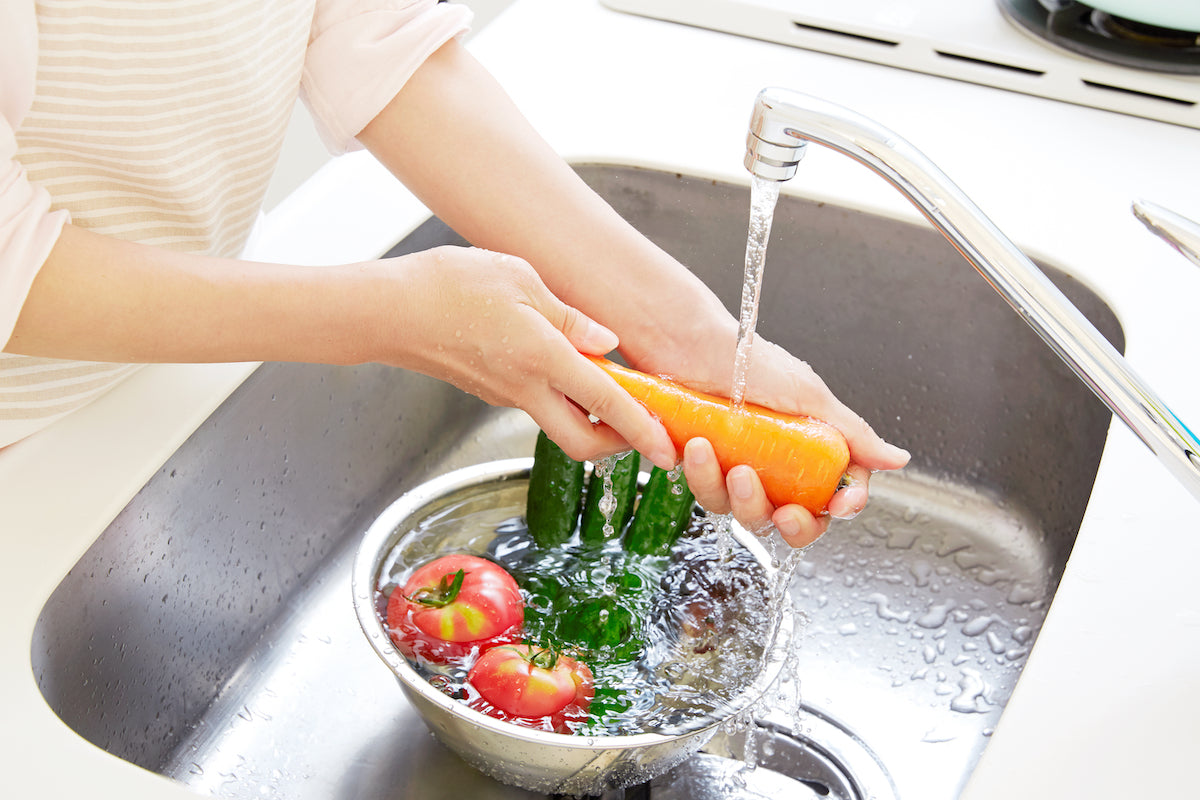
Quick Take
As important as it is to load up on immunity-boosting foods (like whole fruits and veggies!), it's also important to wash your produce thoroughly, especially when buying conventional or eating them raw. Follow these healthy and safe practices for cleaning your fruits and vegetables.
On this page
Best practice for removing germs
Best practice for removing pesticides
Best practice for removing dirt
Best practice for washing mushrooms
Best practice for washing leafy greens (without getting them soggy!)
Key Takeaways
But first: A FREE gift for you
The Full Story
Keeping our homes and bodies free from germs is top of mind as we navigate the coronavirus crisis. Currently, the USDA does state the following related to COVID-19 and produce: “We are not aware of any reports at this time of human illnesses that suggest COVID-19 can be transmitted by food or food packaging.”
That said, it's still important to wash your produce, during a pandemic and otherwise, to protect yourself from harmful bacteria (notably E Coli and Salmonella) as well as common viruses.
Our biggest barrier to the outside world isn’t through our skin, but through our guts! So while it’s extremely important to wash your hands, you have to also remember to wash your fruits and veggies.
Best practice for removing germs
A safe way to reduce the number of bacteria on your fruits and veggies is to soak your veggies in a 1 part vinegar, 2 parts water mixture. You can use distilled white vinegar or apple cider vinegar, whichever you have on hand. Then, rinse thoroughly with clean water. This will reduce the number of bacteria on the surface, but may affect the flavor a little so make sure you really rinse.

Best practice for removing pesticides
Submerge your fruits and veggies in a large bowl of water mixed with 1 teaspoon of baking soda. Let sit for about 2 minutes, then scrub with a brush and rinse thoroughly with clean water.

Best practice for removing dirt
Soak fruits or veggies in cold, clean water for 2 minutes. Then use a bristle brush to scrub the nooks and crannies on rougher root vegetables. Rinse thoroughly with clean water.
Best practices for washing mushrooms
While some people say don't like to get mushrooms wet before cooking them, you definitely CAN wash and store mushrooms to remove dirt. Place mushrooms, sliced or whole, in a bowl of cold water and (with clean hands) move the mushrooms around a bit to loosen the grit. Once the dirt falls to the bottom of the bowl, take the mushrooms out and rinse in the colander with clean water. Then place on paper towels to dry before storing in a paper bag in the fridge (make sure they're very dry before putting in the fridge!).

Best practices for washing leafy greens
Worried about soggy greens? Don't be! You can have clean AND crisp greens by filling a bowl with water and placing your greens in it. If you want, move the greens around a little by shaking the bowl. You'll see dirt fall to the bottom. Then you can move the greens into a colander and rinse under cold water. Then pat dry with a clean towel or paper towel and air dry until they're completely dry - you don't want any remaining moisture or you're asking for soggy greens! Once they're dry, toss them in a paper towel lined food storage container.
Key takeaways
- The USDA states there's no evidence right now suggested COVID-19 can be transmitted by food and packaging but recommends always following good hygiene practices
- It's always important to clean your fruits and veggies to keep them free from harmful bacteria and viruses.
Don't forget your gift!
By The MamaSezz Team
